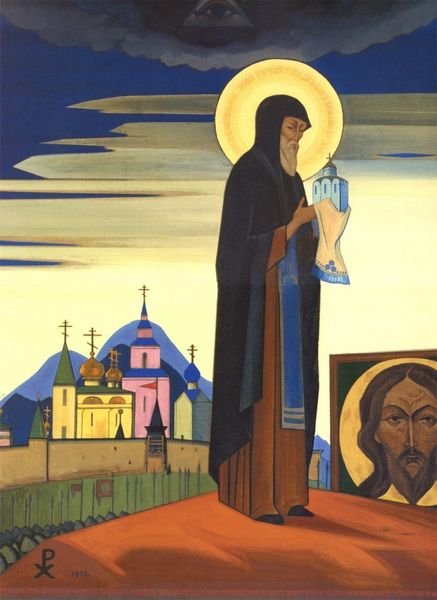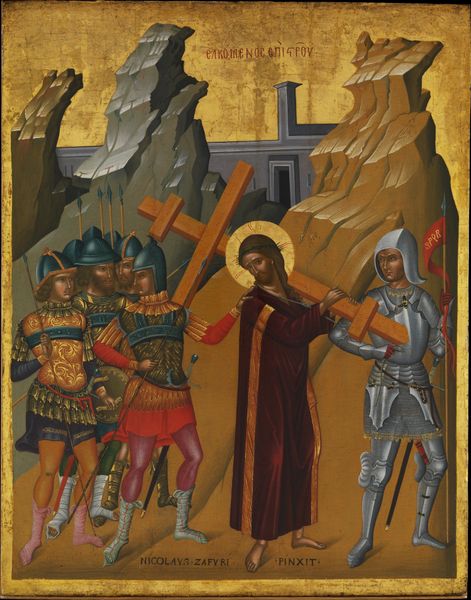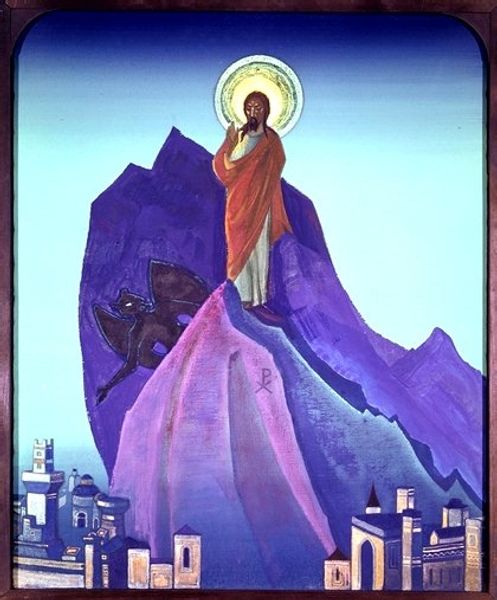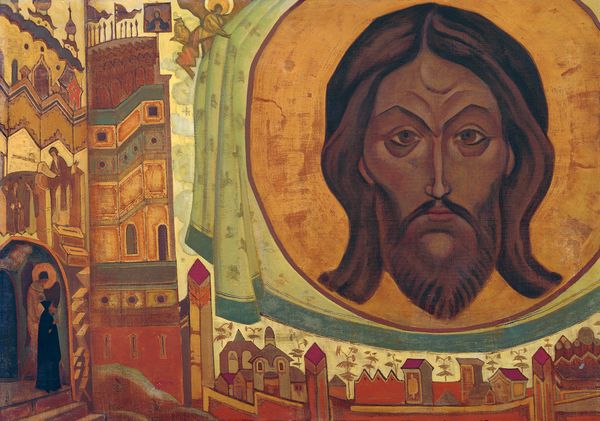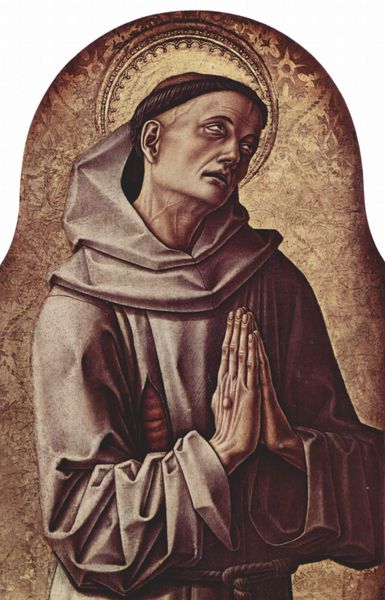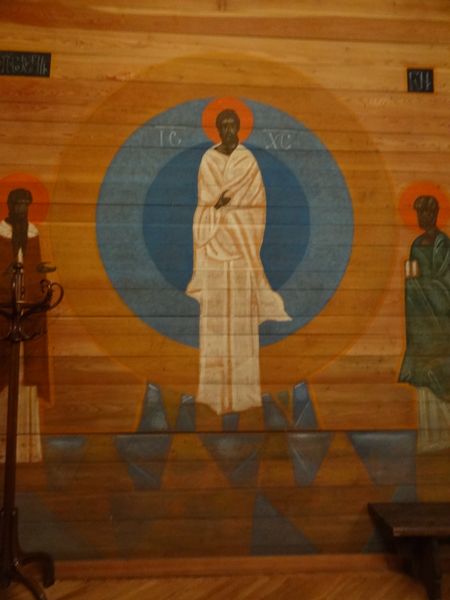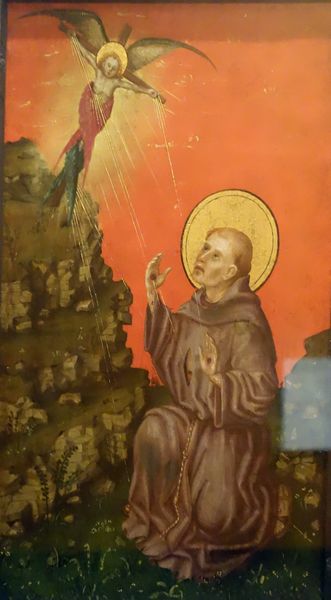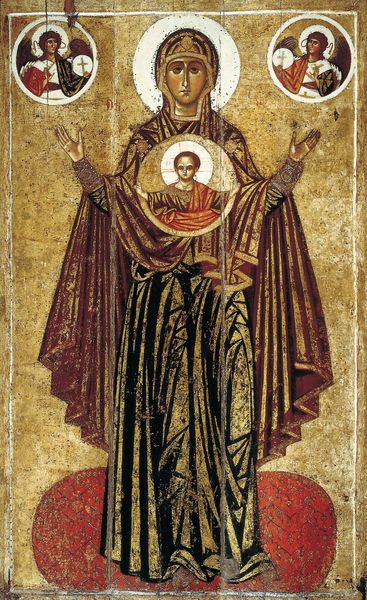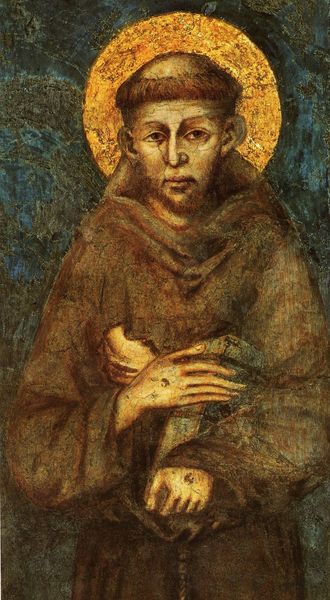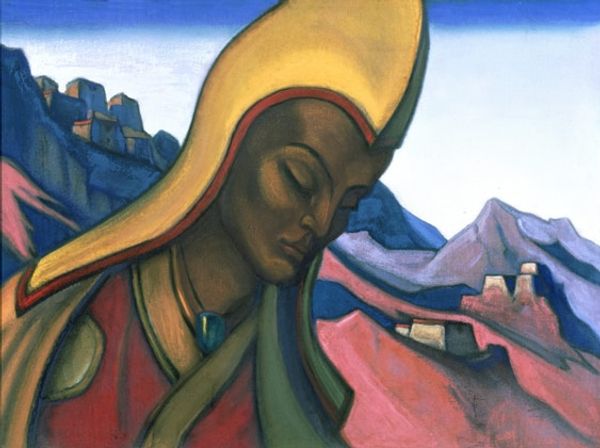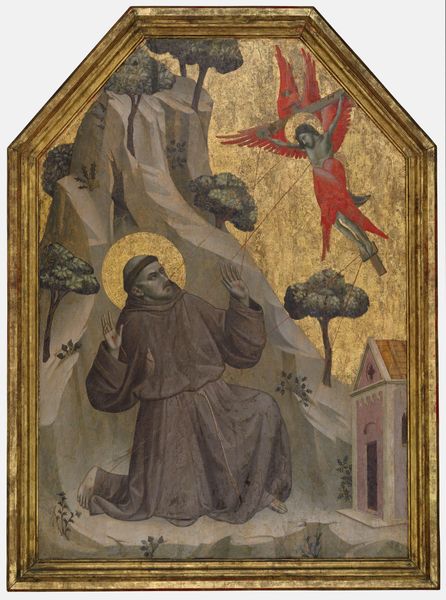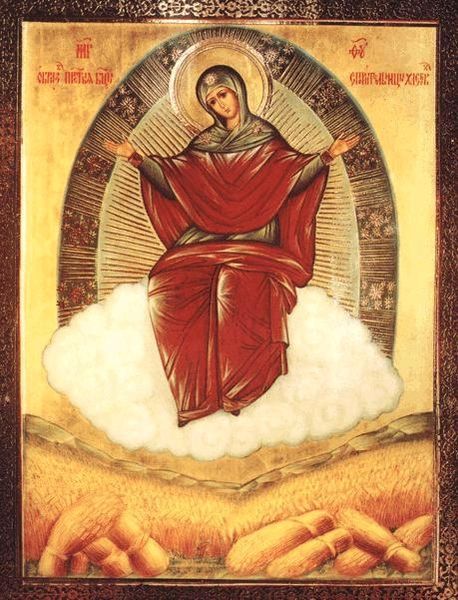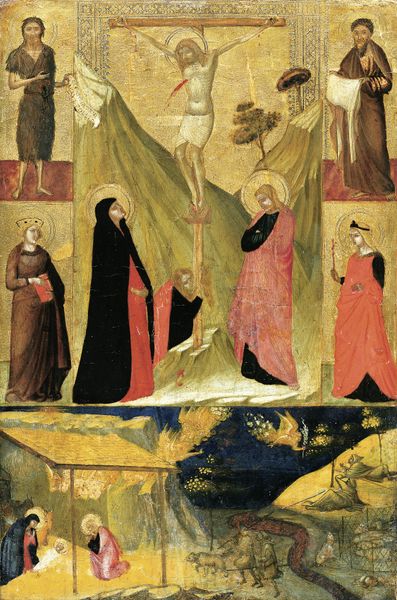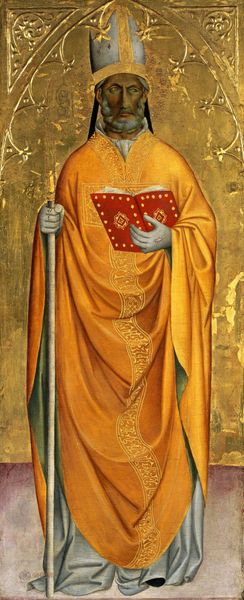
Copyright: Public domain
Editor: This is Nicholas Roerich's "St. Francis," painted in 1931 using oil paints. I'm struck by the almost stage-like composition; it feels very deliberate. What do you see in this piece? Curator: It's fascinating to consider this piece through the lens of its production. Look at the layering of the oil paint, creating texture yet remaining so flat, almost like distemper. Knowing Roerich's interest in theosophy, the stylized landscape isn't just a backdrop, it's a crafted environment. Notice how the figure, rendered in such simple forms, contrasts with the detail of the mountains. Is that contrast intentional or does the figure lack craftsmanship? Editor: I see what you mean about the craft. How does his interest in theosophy affect his choices? Curator: Theosophy emphasizes universal brotherhood and the interconnectedness of all things. Perhaps Roerich is attempting to flatten hierarchies of skill. St. Francis, holding the dove, becomes integrated into a consciously fabricated world. We see it in the conscious materiality. Are those bird designs stencilled perhaps, the sky a basic block of pigment? Editor: So, you're suggesting that by focusing on the materials and process, Roerich blurs the line between traditional artistic skill and a more… manufactured aesthetic, hinting at that connection. It almost democratizes the image, as St. Francis is no better than nature and man-made products? Curator: Precisely. The 'holy' becomes grounded in the quotidian, and the viewer confronts this connection through the stark visibility of Roerich’s technique. Editor: I hadn't considered it that way! It is more complex and accessible because it’s both mystical and grounded. Thank you. Curator: And thank you! It’s important to reflect that what we take from art lies so deeply in how it is made.
Comments
No comments
Be the first to comment and join the conversation on the ultimate creative platform.
